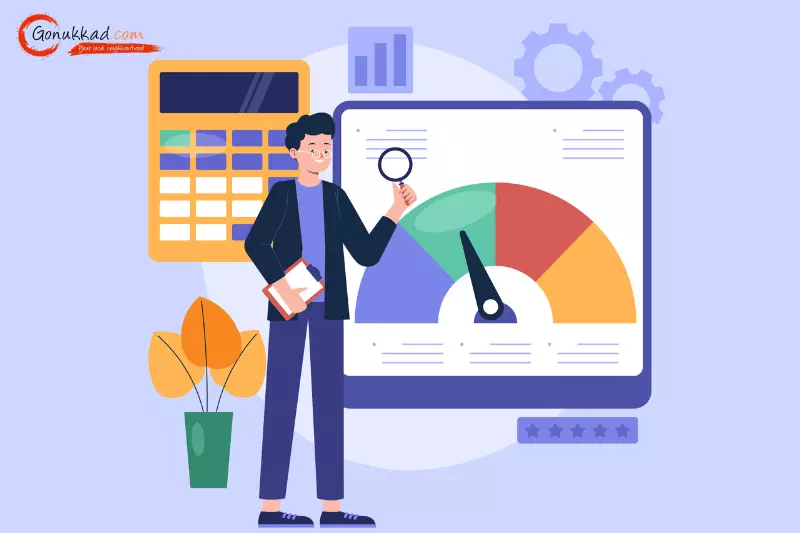22 December, 2023

Last updated on 22 December, 2023
Written by Content Team
Top 10 Key Performance Indicators For Ecommerce Business
Elevate your ecommerce game with our guide to the Top 10 Key Performance Indicators (KPIs) crucial for success. Explore Now!
A KPI or keep performance indicator refers to a set of crucial quantifiable measurements used to monitor your business progress and achievement of goals. It is used to gauge a company's overall performance in the long term. KPI is a metric used to analyze how well an organization is performing against its objectives.
Now that you have a proper understanding of what a Key Performance Indicator (KPI) is in an e-commerce business, it's time to know how to use it. Let's dig into these 10 e-commerce KPIs that are essential for your business.
Having loyal customers for Ecommerce businesses is one of the most significant ways to see progress in their business. The loyalty of customers is one of the most determining and unique KPIs for your organization’s success.
Website performance and user engagement KPI lets you understand how much traffic your website is gaining. This ecommerce KPI helps to monitor website performance, which leads to better conversion. KPI also monitors page per-session views, which indicates the purchase process and converts people into customers in their journey.
Advertising and marketing are things that run on data, and they're easiest to track. Hence, some of the essential advertising and Marketing metrics are pay-per-click or PPC, return on spent referral sources, and average position.
Another important metric that many Ecommerce businesses need to calculate is the shopping cart abandonment rate. Cart abandonment is a term in e-commerce businesses that refers to visitors placing items in their cart but leaving the site without making the purchase. But the question is, why have people abandoned their carts? There can be many reasons that make people leave their cart, such as website errors, unexpected shipping costs, visitors not being ready to spend for a declined card
AOV, or average order value, is a metric in e-commerce that refers to the amount spent on customers per order on average. Hence, increasing the average order value can increase your revenue. This Ecommerce KPI calculates your average order value in a time frame and is divided by the total number.
The customer retention rate is something that determines your business's success. The retention rate is something that you calculate by the customers who frequently come back to your business. Companies need to keep a measurement of their customer retention rate and see whether their customer is returning or not. This also attracts new customers and increases your profit percentage.
Calculating the net profit margin lets you measure a business's overall profitability. A net profit margin is something that the business generates after deductions, taxes, operational costs, and so on. Thus, the profit signifies how much your company has after all the deductions.
Customer acquisition cost, also referred to as CAC, is something that denotes how much it takes to buy a customer. For instance, let's say that you spend $1000 a month on sales and marketing, which takes in 25 new customers, and each customer costs you $40 to acquire. Hence, this makes it vital for you to know your CAC.
Social media and influential marketing KPIs are made to indicate how much of your company is present on social media. Social media presence is essential to bring engagement rate, impressions, reach, and CTR to your e-commerce brand or company. Social media influence is a phenomenal impression that can make or break any company.
E-commerce websites can gain a significant amount of benefit from monitoring and tracking their organic search ranking. Search rankings are not only essential in measuring your company's performance but also indicate page and on-page efforts full stop; through this measurement, you can understand whether they are paying off or not.
The bottom line is to identify your business’s aspirations and goals. Through these 10 Key Performance Indicators, you can align with the objectives of your brand. If you also want to create your business presence online, GoNukkad can help you with creating a brand name for you.
Q. Why is Customer Lifetime Value (CLV) important for an E-commerce business?
A. CLV measures the long-term value a customer brings to your business. Understanding this KPI helps in building loyalty and tailoring strategies to retain valuable customers, ultimately boosting business success
Q. How does the Average Order Value (AOV) contribute to increasing revenue in e-commerce?
A. AOV represents the average amount spent by customers per order. Increasing AOV directly impacts revenue, as it calculates the average order value within a specific time frame, providing insights for revenue optimization.
Q. Why is the Net Profit Margin essential for measuring a business's overall profitability?
A. The Net Profit Margin measures a business's profitability after deductions. It indicates how much the company retains after all expenses. Calculating this KPI provides a clear picture of overall financial health.
Q. What does the Shopping Cart Abandonment Rate reveal about e-commerce businesses?
A. Shopping Cart Abandonment Rate reflects the percentage of visitors who add items to their cart but leave without completing a purchase. Understanding why users abandon their carts is crucial for optimizing the purchasing process.
Q. How does Customer Retention Rate impact business success in e-commerce?
A. Customer Retention Rate measures the frequency of customer returns. It is vital for attracting new customers and increasing profit percentages. Monitoring this KPI ensures sustained business success and growth.
Q. What is a key performance Indicator (KPI) in an ecommerce business? ecommerce KPI
A. A Key Performance Indicator (KPI) in an e-commerce business is a measurable metric that evaluates the performance and effectiveness of specific aspects such as sales, marketing, and customer satisfaction.
Amplify sales with our expert account management. Unleash your true potential now!
Call Us